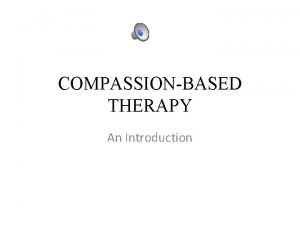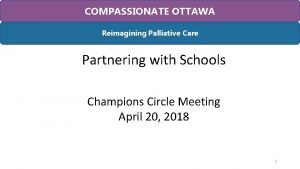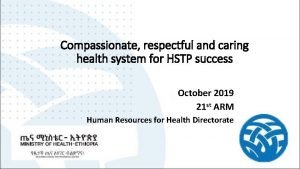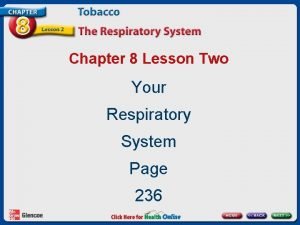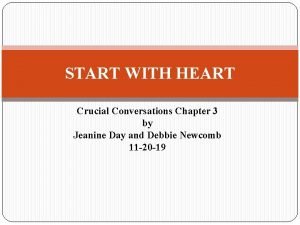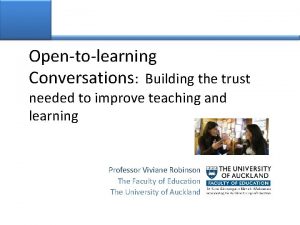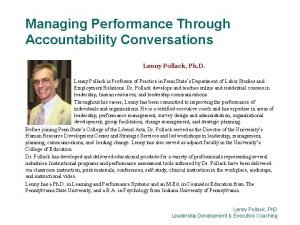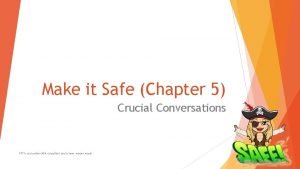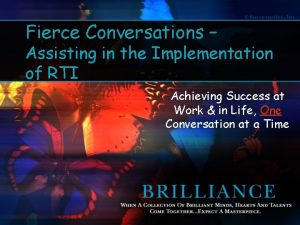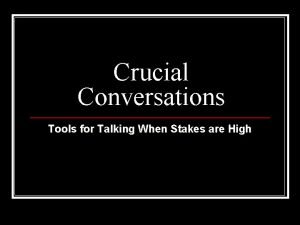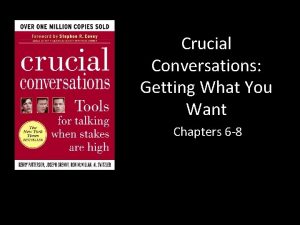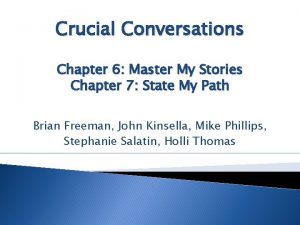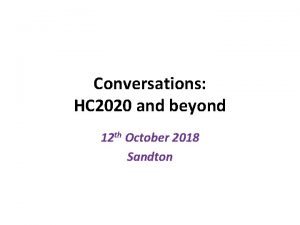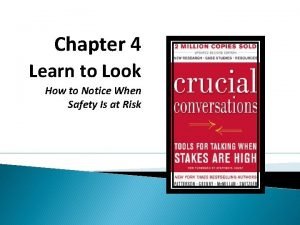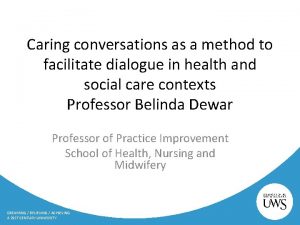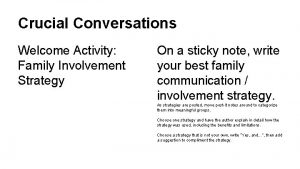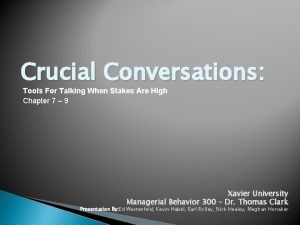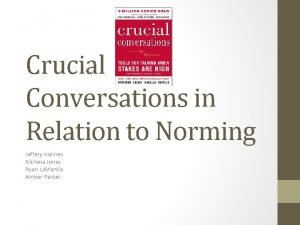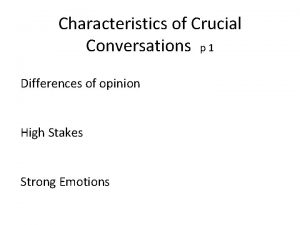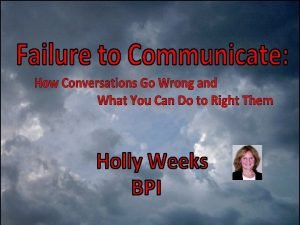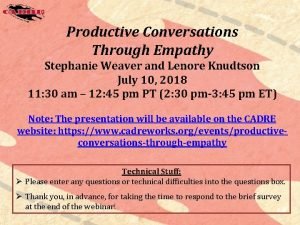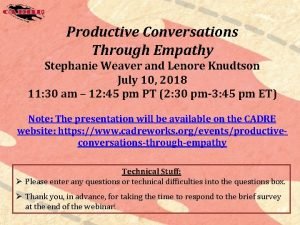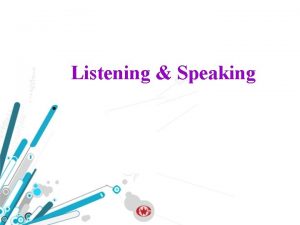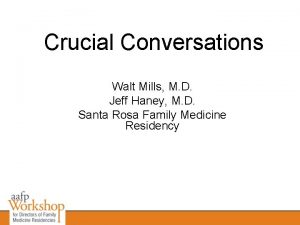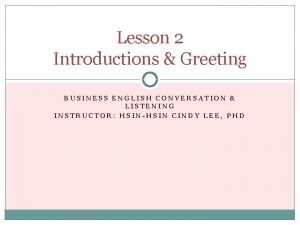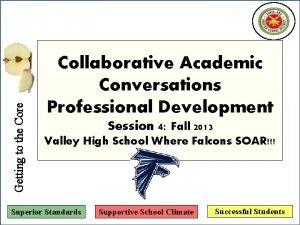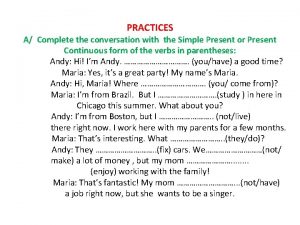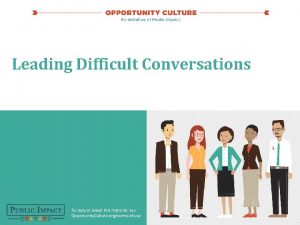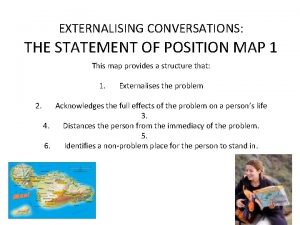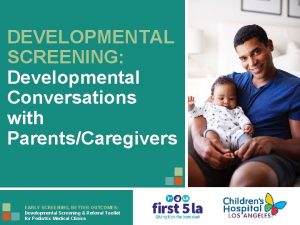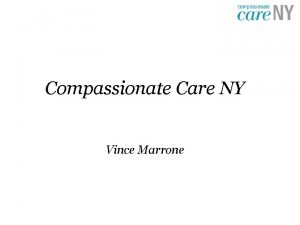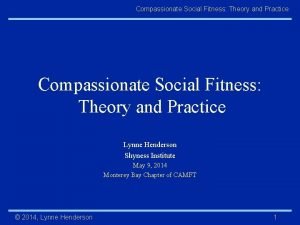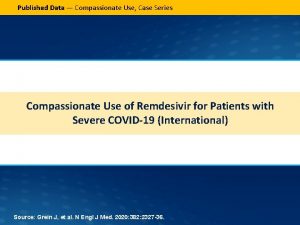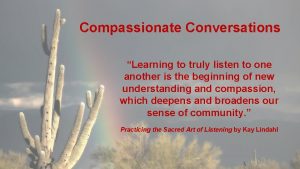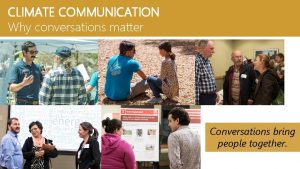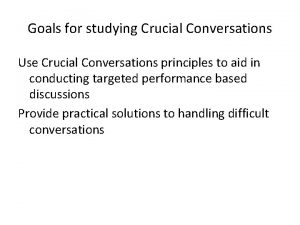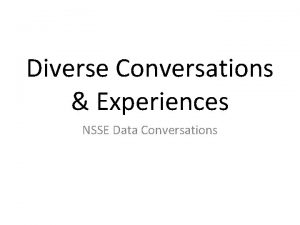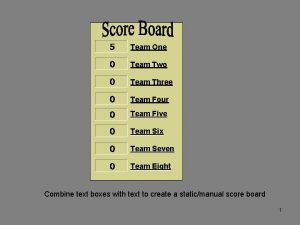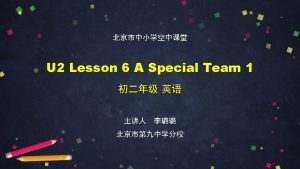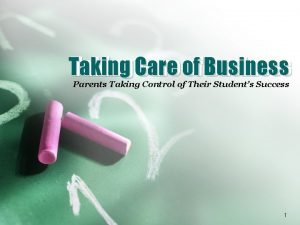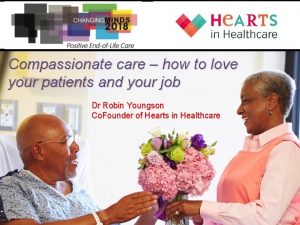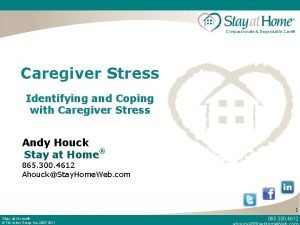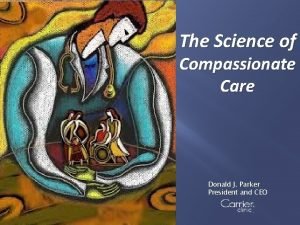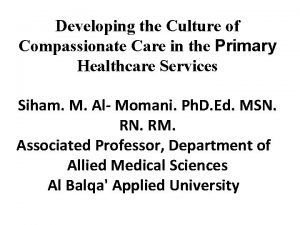TAKING CARE OF THE COMPASSIONATE CARE TEAM Conversations




















































- Slides: 52

TAKING CARE OF THE COMPASSIONATE CARE TEAM Conversations About Moral Resilience and Moral Distress Gerri Lamb, Ph. D, RN, FAAN Daniel Miller, MD Center for Advancing Interprofessional Practice, Education and Research Chief Graduate Medical Education & Behavioral Health Integration Arizona State University Hudson River Health Care, NY June 23, 2020

THE NACHC MISSION America’s Voice for Community Health Care The National Association of Community Health Centers (NACHC) was founded in 1971 to promote efficient, high quality, comprehensive health care that is accessible, culturally and linguistically competent, community directed, and patient centered for all. @NACHC

ASKING QUESTIONS VIA CHAT 1. The chat feature is available to ask questions or make comments anytime. 2. Click the chat button at the bottom of the Web. Ex window to open the chat box on the bottom righthand side of the window. 3. Choose “Everyone”, as appropriate. - Type your question. - Click “Enter” to send your question. www. nachc. org @NACHC |3

GERRI LAMB, PHD, RN, FAAN Gerri Lamb, Ph. D, RN, FAAN, is the Founding Director of ASU’s Center for Advancing Interprofessional Practice, Education & Research and Professor at the Edson College of Nursing and Health Innovation. Her interprofessional practice and research focus is on care coordination for vulnerable and underserved populations.

DANIEL MILLER, MD Dr. Daniel Miller is a practicing Family Physician and the Chief of Graduate Medical Education and Behavioral Health Integration for Hudson River Health. Care (HRHCare), a not-for-profit, New York State licensed, Federally Qualified Health Center (FQHC) with 43 sites serving approximately 225, 000 patients living throughout New York’s Hudson Valley, Long Island New York City.

DISCLOSURES No disclosures to report The content of this activity may include discussion of off label or investigative drug uses. The faculty is aware that it is their responsibility to disclose this information.

TARGET AUDIENCE Health care providers across the care continuum Health professions faculty, preceptors and students Health care administrators

EDUCATIONAL OBJECTIVES Explore the role of moral resilience in bolstering team reserves and capacity. Describe the common signs and symptoms associated with moral distress. Recognize the experience of moral distress in the context of justice and institutional and systemic racism Identify clinical situations that can trigger moral distress in primary care teams. List five strategies members of primary care teams can use to prevent and ameliorate moral https: //ipe. asu. edu/team-care-connections distress in team members.

Session 2 Reducing Talent Burnout & Increasing Workforce Resiliency Thursday, June 25 | 1: 00 pm – 2: 00 pm EDT Visit www. nachc. org to learn more and join the event.

CLINICAL WORKFORCE WELLNESS – AND IMPORTANCE OF CARING TEAMS

CONVERSATIONS ABOUT MORAL DISTRESS AND MORAL INJURY DIGITAL MAGAZINE Developers: § Gerri Lamb, Lise Mc. Coy, Yvonne Price, Nina Karamehmedovic, Jody Thompson Collaborators: § Arizona State University, A. T. Still University & National Association of Community Health Centers Advisors: § Kathy Mc. Namara & Caryn Bernstein, National Association of Community Health Centers § Dan Miller, Grace Wang, Bill Nash, Cynda Rushton, Nancy Johnson This publication was supported by the Health Resources and Services Administration (HRSA) of the U. S. Department of Health and Human Services under Grant No. U 30 CS 16089, as a part of an award totaling $6, 375, 000 with 75% financed with non-governmental sources. The contents are those of the authors and do not necessarily represent the official views of, nor endorsement, by HRSA, HHS, or the U. S. Government.

INTRO Moral Distress you know the right thing to do but you’re not able to do it Moral Courage courage to do the right thing in spite of the risks Moral Resilience ability and willingness to take right action in the face of moral or ethical adversity Distress Courag e Healin g MORA L Resilience Injury

MORAL DISTRESS You know the right thing to do, but you’re not able to do it. – Andrew Jameton, 1984

MORAL DISTRESS AND MORAL INJURY

CONTINUUM OF MORAL DISTRESS

MORAL DISTRESS AND BURNOUT Burnout is a syndrome characterized by high emotional exhaustion, high depersonalization (i. e. cynicism), and a low sense of personal accomplishment from work. Research shows that between 35 and 54 percent of U. S. nurses and physicians have substantial symptoms of burnout; similarly the prevalence of burnout ranges between 45 and 60 percent for medical students and residents. National Academies of Sciences, Engineering and Medicine, 2019, p. 1

HISTORY OF MORAL DISTRESS AND MORAL INJURY

ABOUT VALUES AND PERSONAL INTEGRITY

JUSTICE

JUSTICE VALUES

ACTIONS ALIGNMEN T VALUES

ACTIONS MORAL DISTRESS VALUES

MORAL DISTRESS

MORAL DISTRESS RACISM

ALIGNMEN T ACTIONS VALUES MORAL DISTRESS

ALIGNMEN T ACTIONS VALUES MORAL COURAGE

MORAL DISTRESS You know the right thing to do, but you’re not able to do it. – Andrew Jameton, 1984

CONTINUUM OF MORAL DISTRESS

I go home at night feeling like I’m failing my patients. We’ve got 15 minutes to see our patients – no matter what. This guy is homeless, he’s got no food, he can’t afford his meds. What can I possibly do in 15 minutes to make a difference? All these regulations, all this hoop jumping. There are so many delays in getting what my patients need. It’s so frustrating. It hurts your soul. WHAT DOES MORAL DISTRESS SOUND LIKE IN PRACTICE?

“WHERE YOU WORK MATTERS”

CLINICAL SCENARIOS ASSOCIATED WITH MORAL DISTRESS

RECOGNIZING CLUES IN TEAM MEMBERS “Health care people focus on patients. We put our patients first. We don’t pay a lot of attention to what we’re feeling. In fact, we’re probably the last ones to attend to ourselves. ” — Dr. Bill Nash

FIVE THINGS YOU CAN DO TO PREVENT AND LESSEN MORAL DISTRESS NAME IT EDUCATE CLINICAL TEAMS ABOUT PREVENTIVE STRATEGIES FIND TIME TO TALK ABOUT IT RECOGNIZE EARLY CUES TRY TEAM EXERCISES IN “CONVERSATIONS ABOUT MORAL DISTRESS AND MORAL INJURY”

Name it. WHAT YOU CAN DO “We have to be able to describe moral injury better so we can talk and educate people about it. ” – Volunteers of America, Moral Injury Convenings https: //www. voa. org/moral-injury-center/moral-injury-convenings

NAME IT strategies to consider Encourage team members to recall a situation in which they felt their values were challenged in a way that stayed with them that they continue to think about: 1. What was happening? 2. What was at stake? 3. What did the experience feel like? 4. What did your team do?

HELP CLINICIANS FIND TIME TO TALK ABOUT IT “We have to think about how we provide opportunities for those really important conversations so that we can assure that we're taking the best care of our patients. ” — Nancy Johnson, CEO

HELP CLINICIANS FIND TIME strategies to consider § Carve out a practice time for team meetings § Reduce administrative burden on providers so they can focus on taking care of patients § Task specific team members to facilitate conversations about challenging and frustrating situations that are root of moral distress

RECOGNIZE IT EARLY TO TAKE ACTION “If we can recognize those symptoms as early as possible and take proactive action to address them, I think we have the opportunity to actually strengthen our moral resilience, to be able to navigate these situations with integrity and without so much cost to ourselves or to the people that we're serving. ” – Cynda Rushton, Ph. D, RN, FAAN Author of Moral Resilience, 2018

RECOGNIZE IT EARLY TO TAKE ACTION strategies to consider Listen to ‘moral emotions’ - ones that convey how a provider feels when they believe something ‘should’ happen Use of words ‘should’ or ‘ought’ are important clues that values are at stake Emotions that range from anger to guilt and shame Look for ‘clues’ to situations that generate moral conflict Knowing the right thing to do but experiencing constraints to doing it Believing the care being provided is not consistent with what ‘should’ happen Talk about factors that create these kinds of situations and possible solutions Start with solutions that are within the control of your team Identify solutions that will require leadership and broader organizational engagement

§ Recognize signs and symptoms. § Buddy up to watch out for each other. § Create a safe place to talk. § Develop team cues for asking about and acknowledging moral distress. § Listen closely for recurring situations that “stay with” team members. § Implement quick successes within the control of your team. § Engage administrators in solving system level issues that contribute to moral distress and moral injury. EDUCATE YOUR TEAM

WHAT TEAMS CAN DO strategies to consider Buddy Up! Dr Nash suggests buddying up with another team member to work out a plan of how to check on each other, for example, ask questions like: “How and what do you want me to do if something happens to you, one of your patients has a bad outcome and I recognize maybe you withdrawing a little bit, pulling away, getting grumpy, whatever? What would you want me to do? What should I say? ” Plan for it!

ULTIMATE LY A CALL TO ACTION

TAKE CARE. Of yourself. Of your team.

CLOSING THOUGHTS Awareness of moral distress and moral injury is growing – a good thing for early recognition and action. The emotional and physical impact can be very significant. Once recognized, there are many things team members can do to support each other. Recognize moral distress as a symptom of values misalignment and ultimately a call to action

AN INVITATION We would like to work with individuals and teams willing to try out one or more activities in Conversations about Moral Distress and Moral Injury and help us evaluate its usefulness and impact. If you would be interested in working with us, please write your email address and name in the chat box. Thank you! https: //ipe. asu. edu/team-care-connections

FOR INFORMATION OR TO RECEIVE THE MAGAZINE Email teamcareconnections@asu. edu Gerri. Lamb@asu. edu cshuler@nachc. com Visit us on the web ipe. asu. edu/team-care-connections

Q&A

THANK YOU




 Aegrotat uoa
Aegrotat uoa Example of compassionate letter to yourself
Example of compassionate letter to yourself Compassionate ottawa
Compassionate ottawa Allah the compassionate
Allah the compassionate In the name of allah the compassionate the merciful
In the name of allah the compassionate the merciful Allah the compassionate
Allah the compassionate Compassionate respectful and caring
Compassionate respectful and caring The most compassionate
The most compassionate Compassionate capitalism definition
Compassionate capitalism definition Pallatie
Pallatie Bureaucratic bypass syndrome
Bureaucratic bypass syndrome Team spirit becomes team infatuation
Team spirit becomes team infatuation The white team cheers for the blue team, just like
The white team cheers for the blue team, just like Levels of care primary secondary tertiary quaternary
Levels of care primary secondary tertiary quaternary Taking care of your respiratory system
Taking care of your respiratory system Start with heart
Start with heart Constructive structure in asl
Constructive structure in asl Viviane robinson open to learning conversations
Viviane robinson open to learning conversations Accountability conversations
Accountability conversations Crucial conversations presentation
Crucial conversations presentation Fierce conversations 7 principles
Fierce conversations 7 principles Talk tentatively
Talk tentatively Crucial conversations chapter 6 summary
Crucial conversations chapter 6 summary Scene video
Scene video Crucial conversations chapter 6
Crucial conversations chapter 6 Fierce conversations 7 principles
Fierce conversations 7 principles Crucial conversations learn to look
Crucial conversations learn to look Caring conversations framework
Caring conversations framework Difficult conversations role play scenarios
Difficult conversations role play scenarios Crucial conversations role play exercises
Crucial conversations role play exercises Crucial conversations chapter 7
Crucial conversations chapter 7 Crucial conversations
Crucial conversations Crucial conversations
Crucial conversations Thwarting ploys
Thwarting ploys Welcome to our class gif
Welcome to our class gif Productive conversations take real empathy
Productive conversations take real empathy Stephanie weaver md
Stephanie weaver md Match the conversations
Match the conversations Crucial conversations 7 principles
Crucial conversations 7 principles Cruicial conversations
Cruicial conversations Courageous conversations wheel
Courageous conversations wheel The greeting in this conversation is
The greeting in this conversation is Next steps with academic conversations
Next steps with academic conversations Wayne always obtrudes upon our conversations
Wayne always obtrudes upon our conversations Crucial conversations tips
Crucial conversations tips Present simple conversation
Present simple conversation Fierce conversations template
Fierce conversations template Statement of position map narrative therapy
Statement of position map narrative therapy Developmental conversations
Developmental conversations Next steps with academic conversations
Next steps with academic conversations Listen to three conversations about animals
Listen to three conversations about animals Cube conversations steve wyborney
Cube conversations steve wyborney Hát kết hợp bộ gõ cơ thể
Hát kết hợp bộ gõ cơ thể

